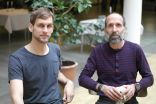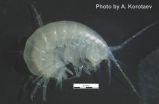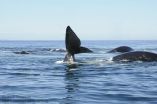(Press-News.org) Washington, DC (May 18, 2015) -- Patients faced with a choice of surgical options want to engage their physicians and take a more active role in decision-making, according to a study (abstract 567) released at Digestive Disease Week® (DDW) 2015. Further, those physicians must provide better support tools to help patients participate in the decision-making process. The study found that patients consult multiple sources (Internet, family, friends, doctors, etc.) and say that while doctors provide the most believable information, it was also the least helpful.
"In this evolving health-care landscape, there is an effort to involve patients in decision making about their health care," said Jessica Cohan, MD, the study's lead researcher and general surgery resident and fellow at the Institute for Health Policy Studies at the University of California, San Francisco (UCSF). "Given this pattern, it's not surprising that they are now doing more research on their surgical options and taking a more proactive role in deciding which therapy is right for their unique situation."
In this pilot study, researchers at UCSF surveyed 18 patients with ulcerative colitis (UC) who were referred for surgical evaluation because they needed their large intestine removed, with a subsequent procedure to compensate for this removal. Patients had to choose between an end ileostomy or an ileal pouch-anal anastomosis (IPAA). Before patients met with a surgeon, Dr. Cohan and her team gauged the patients' desire to actively participate in the decision-making process in choosing between the two procedures.
While both are effective options, the surgeries are completely different in methodology and in their impact on everyday life. With end ileostomy, the patient undergoes surgery during which clinicians remove the large intestine and connect the small intestine to a bag that is outside the patient's body, through which waste is emptied, requiring the patient to empty the bag as needed. With IPAA (or J-Pouch), the patient undergoes two surgeries in which clinicians connect the small intestine to the rectum, through which the patient can eliminate waste as they normally would.
The 18 patients surveyed indicated that they spent an average of 5.5 hours researching the two procedures before coming in for the surgical evaluation, citing the Internet and information given to them by their physician as the most frequent sources of information. Interestingly, patients reported that the physician-provided information was the most believable, but least helpful. Sixteen patients also said that they spoke to a spouse, friends, parents and/or siblings about this decision. Ultimately, 17 of the 18 patients expressed a desire for ownership by saying they wanted to make the decision "on my own" or "on my own after seriously considering my doctor's opinion."
"While our study demonstrates that patients seriously consider the advice and information provided by their doctor, it also shows that the information and how it's presented needs to be revised to meet patient needs," added Dr. Cohan. "Decision-support tools, such as pamphlets, need to be written for a general consumer audience and present all the information needed for patients to actively participate in the surgical decision-making process. The materials should be designed in a way that supports patient desire to speak with the various people in their lives about these important medical decisions."
Dr. Cohan also added that these findings are applicable to many other situations in which patients need to decide between multiple medical options. For example, breast cancer patients can also find themselves in a similar circumstance in which they may need to decide between a mastectomy or lumpectomy, and could benefit from easy-to-understand information on what lies ahead.
As a follow up to this pilot study, researchers are speaking with ulcerative colitis patients after surgery to understand their perspective on the pre-surgery decision-making process with the benefit of hindsight. Dr. Cohan's team is also testing paper-based decision-support tools that address some of the patient concerns discovered during the study, including increased clarification of medical procedures. Researchers intentionally chose to print these materials as to make them easily accessible and shareable.
Dr. Jessica Cohan will present data from the study "Surgical decision making in patients with ulcerative colitis: the patient perspective," abstract 567, on Monday, May 18, at 9 a.m., in 204C of Walter E. Washington Convention Center. For more information about featured studies, as well as a schedule of availability for featured researchers, please visit http://www.ddw.org/press. The Crohn's and Colitis Foundation of American awarded Dr. Cohan with a research fellowship, which was used to conduct this research. Faculty disclosures can be found online at http://www.ddw.org/DDW_Disclosure_Index.pdf.
INFORMATION:
Digestive Disease Week® (DDW) is the largest international gathering of physicians, researchers and academics in the fields of gastroenterology, hepatology, endoscopy and gastrointestinal surgery. Jointly sponsored by the American Association for the Study of Liver Diseases (AASLD), the American Gastroenterological Association (AGA) Institute, the American Society for Gastrointestinal Endoscopy (ASGE) and the Society for Surgery of the Alimentary Tract (SSAT), DDW takes place May 16-19, 2015, at Walter. E. Washington Convention Center, Washington, DC. The meeting showcases more than 5,000 abstracts and hundreds of lectures on the latest advances in GI research, medicine and technology. More information can be found at http://www.ddw.org.
Follow us on Twitter @DDWMeeting; hashtag #DDW15. Become a fan of DDW on Facebook.
The historical past is important when we seek to understand environmental conditions as they are today and predict how these might change in the future. This is according to researchers from Umeå University, whose analyses of lake-sediment records show how lake-water carbon concentrations have varied depending on long-term natural dynamics over thousands of years, but also in response to human impacts over the past several hundred years. The study has been published in PNAS (the Proceedings of the National Academy of Sciences).
Environmental monitoring programmes ...
Just as alchemists always dreamed of turning common metal into gold, their 19th century physicist counterparts dreamed of efficiently turning heat into electricity, a field called thermoelectrics. Such scientists had long known that in conducting materials the flow of energy in the form of heat is accompanied by a flow of electrons. What they did not know at the time is that it takes nanometric-scale systems for the flow of charge and heat to reach a level of efficiency that cannot be achieved with larger scale systems. Now, in a paper published in EPJ B Barbara Szukiewicz ...
The grounding of a giant iceberg in Antarctica has provided a unique real-life experiment that has revealed the vulnerability of marine ecosystems to sudden changes in sea-ice cover.
UNSW Australia scientists have found that within just three years of the iceberg becoming stuck in Commonwealth Bay - an event which dramatically increased sea-ice cover in the bay - almost all of the seaweed on the sea floor had decomposed, or become discoloured or bleached due to lack of light.
"Understanding the ecological effect of changes in sea-ice is vital for understanding the future ...
Scientists are attempting to mimic the memory and learning functions of neurons found in the human brain. To do so, they investigated the electronic equivalent of the synapse, the bridge, making it possible for neurons to communicate with each other. Specifically, they rely on an electronic circuit simulating neural networks using memory resistors. Such devices, dubbed memristor, are well-suited to the task because they display a resistance, which depends on their past states, thus producing a kind of electronic memory. Hui Zhao from Beijing University of Posts and Telecommunications, ...
An international team of scientists have discovered a new species of typhlogammarid amphipod in the limestone karstic caves of Chjalta mountain range -- the southern foothills of the Greater Caucasus Range. The study was published in the open access journal Subterranean Biology.
The new amphipod, which belongs to the genus Zenkevitchia, is the second species known from this group. This new addition to the genus is named Zenkevitchia yakovi after the famous Russian biospeleologist Prof Yakov Birstein.
Typhlogammarid amphipods are a group blind and unpigmented endemic ...
Radiotherapy used in cancer treatment is a promising treatment method, albeit rather indiscriminate. Indeed, it affects neighbouring healthy tissues and tumours alike. Researchers have thus been exploring the possibilities of using various radio-sensitizers; these nanoscale entities focus the destructive effects of radiotherapy more specifically on tumour cells. In a study published in EPJ D, physicists have now shown that the production of low-energy electrons by radio-sensitizers made of carbon nanostructures hinges on a key physical mechanism referred to as plasmons ...
This news release is available in German.
Scientists from Paris and Helmholtz-Zentrum Berlin have been able to switch ferromagnetic domains on and off with low voltage in a structure made of two different ferroic materials. The switching works slightly above room temperature. Their results, which are published online in Scientific Reports, might inspire future applications in low-power spintronics, for instance for fast and efficient data storage.
Information can be written as a sequence of bit digits, i.e. "0" and "1". Materials which display ferromagnetism ...
Bowel cancer is often driven by mutations in one of several different genes, and a patient can have a cancer with a different genetic make-up to another patient's cancer. Identifying the molecular alterations involved in each patient's cancer enables doctors to choose drugs that best target specific alterations.
However, it is also becoming clear that while some cancers may be driven by a single gene mutation, individual tumours are often composed of groups of cancer cells, with each group having different molecular alterations from the others. This is known as intra-tumour ...
Streptococcus pneumoniae is a major human pathogen and is known to be associated with increased risk of fatal heart complications including heart failure and heart attacks.
As Streptococcus pneumoniae is a respiratory pathogen that does not infect the heart, however, this association with heart problems has puzzled clinicians and researchers, particularly as even prompt use of antibiotics does not provide any protection from cardiac complications.
A multidisciplinary research team, led by Professor Aras Kadioglu and Professor Cheng-Hock Toh at the University of Liverpool, ...
WASHINGTON, D.C., May 18, 2015 -- Human beings have unique voices -- from the deep, resonating bass of James Earl Jones to the raspy melodies sung by Broadway star Carol Channing -- and we routinely recognize individuals based solely on the way they sound, for example over the telephone, on a music CD or in an animated film.
The same theory that explains individual differences in human speech has recently been applied to other members of the animal kingdom, including dogs and deer. Now researchers from Syracuse University in New York are working to understand whether ...




